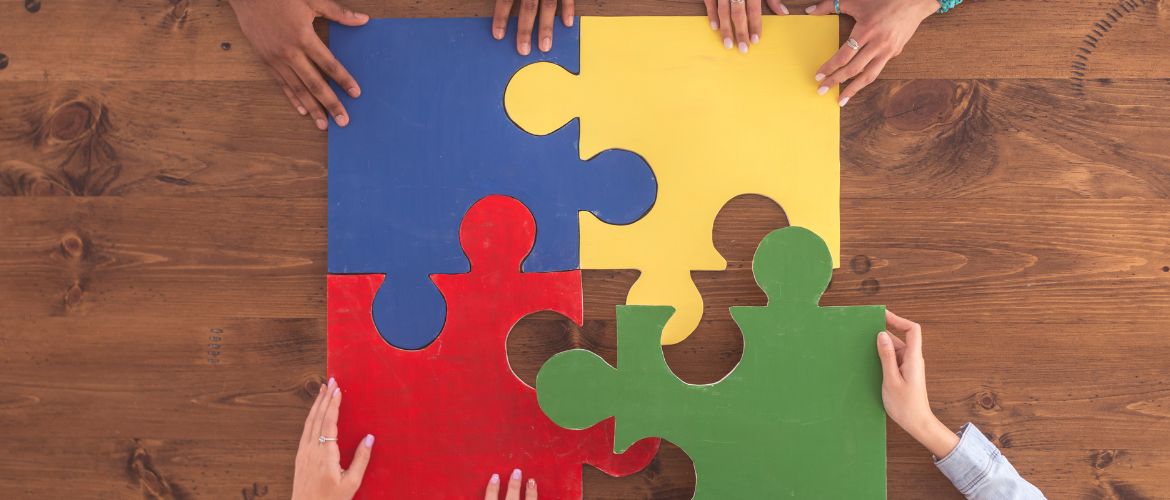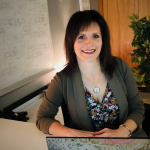Transformative Educational Leadership Journal | ISSUE: Fall 2022
In this article, Sherri Roche examines our own and our system’s propensity for change in dealing head on with the human tendency to stay where things feel comfortable rather than integrate diverse ways of being and lean into the pause of curiosity.
By Sherri Roche
The Covid-19 Pandemic, forest fires, floods, Opioid Crisis, climate change, and Russia’s attack on Ukraine have implications on the role of today’s leaders. Hannon and Mackay (2021) assert we are facing pivotal points in human history, where continuity cannot be assumed and further astonishments are inevitable. We have entered an era where leaders must take wise, effective action amid complex, rapidly changing conditions. In other words, this era necessitates agile leadership and agile organizations. This requirement has been particularly visible in the education system.
This past school year, more than any other, I have witnessed a decline in the stamina and wellbeing of educators. This observation correlates with a recent study published by the University of British Columbia’s Human Early Learning Partnership (HELP) indicating the majority (80.5%) of teachers experience mental health quality as slightly or significantly worse compared to before the Covid-19 Pandemic (Gadermann et al., 2021). This decline appears to correlate with an increase in concerns from school staff regarding student emotional and behavioral adjustment, a trend evidenced by an upsurge in partial school schedules and suspensions. This correlation is disturbing as research, such as the study by Oberle and Schonert-Reichle (2016), validates educator stress levels directly impact students’ psychological stress levels in the classroom.
Amidst all this turmoil, I find myself drawn to the words of De Smet et al. (2018) who contend leaders must develop new sets of capabilities if we are to build and lead agile organizations. We should learn:
- new personal mind-sets and behaviours
- to help teams work in new ways
- how to build agility into the design and culture of the whole organization.
These capabilities, along with the attributes of agility, are notions that have been occupying my attention as a district level leader committed to enhancing supports, services, and inclusivity for all learners. I find myself unremittingly pondering two proclamations by Tony Mackay (2022): “self-transformation is a must for system transformation,” and “we tend to change structures and practices, but not beliefs. All three are required for system transformation” (presentation).
Abraham Maslow’s hierarchy of needs places self-actualization at the top of the needs pyramid and defines it as a person’s full realization of innate potential. I would argue that Transformational Leadership involves leading self and others beyond self-actualization and personal self-interests. It involves leading with curiosity and open-mindedness and committing to selfless ideals to nurture the moral development of followers to internalize the principles and values of the organization they represent. It demands a readiness to re-examine existing views and defuse factors that constrain ones’ thinking in the face of alternative information and new evidence (Le Fevre et al., 2015).
In the resource, The Decision Playbook: Making thoughtful Decisions in a Complex World, Failing et al. (2019) identify thinking traps that affect one’s ability to change course. They highlight one’s tendency to:
- see what has always been seen;
- justify past decisions rather than challenge them;
- look for information that confirms what one already believes;
- and attach to the stories one conveys.
Rising above these traps requires the ability to welcome new perspectives, ask genuine questions (regardless of how uncomfortable they may feel), and alter prior knowledge and thinking. How does a leader begin to embody these notions and those outlined above in an attainable manner?
I have come to witness the influence of the Spirals of Inquiry and Compassionate Systems Leadership in decolonizing traditional forms of data collection and disrupting embedded mental modes. Last year, a team of leaders from within the Central Okanagan School District used the Spiral of Inquiry to seek stakeholder input on ways our Inclusive Education team can achieve its purpose of educating students in a safe, inclusive, equitable, and inspirational learning environment. There was intensity amongst the group regarding the scanning phase as some wanted to rely only on a platform called ThoughtExchange to pursue answers to a series of custom questions. Others, including myself, wanted to probe more deeply to understand the subjective experiences and feelings of those on the frontline through an Empathy Interview process. We agreed to use both.
The Empathy Interview process proved challenging for team members who found it difficult to refrain from steering the conversation towards their own undisclosed agenda. It took a conscious agreement as a team to acknowledge when conversations were straying from genuine inquiry and when we were succumbing to acts of justification in response to feedback that elicited strong emotions. Remaining open-minded was an ongoing practice and necessitated the use of Compassionate Systems Leadership tools, like the Ladder of Inference (Senge et al., 1994), to draw awareness of assumptions and biases that were intercepting the ability to remain curious.
The Thought Exchange Survey combined with the Empathy Interview process resulted in over 800 comments and 300 pages of documented stories. Analyzing the quantity of this data, in a manner that would enable us to draw meaningful inferences and detect thinking traps was another task warranting strategy. We endorsed the assistance of a facilitator to guide us through the sorting and theming process to safeguard our desire to genuinely understand what is happening for all stakeholders in our district and to develop nonjudgmental, non-biased hunches about the current situation regarding inclusivity and support services in schools. Four thematic questions emerged from the data analysis:
- How might we continue to enhance and support integrated/collaborative approaches across departments and with school teams?
- How might we create a comprehensive professional learning plan where all staff are empowered to have the agency to seek the learning needed to thrive in their positions?
- How might we restructure/expand a needs-based model of support that is equitable and responsive to the holistic needs of each student?
- How might we continue to enhance and strengthen transparency and communication?
Before getting to the development of an action proposal I’d like to pause here and explore the interesting stillness that occurs in the space between a system level inquiry scan and the action phase. Holiday (2019) describes this as a time to be steady while the world spins around you. To act without frenzy and hear what needs to be heard. Creative theorist Mihaly Csikszentmihalyi (1996) names this the incubation phase, time where ideas whirl around in the subconscious and where unusual connections can be made. Research asserts that stillness fosters the following dispositions: attentiveness, non-judgment, non-reactiveness, empathic capacity, creative perception, and openness to new insights (Holiday, 2019; Friedland, 2016; Rowland, 2017). Rowland (2017) asserts that skilled leaders should stay in deep attending mode with systemic context to sense what needs to emerge in the learning experience. Csikszentmihalyi (1996) maintains it is impossible to accomplish something that is truly new and worthwhile without struggling with it first.
I have found an open invitation amongst the stillness to deepen my reflection, curiosity, and conjectures. While in this place of stillness, I find myself reflecting upon the data and the four emerging thematic questions and there is space to probe my role as a transformational leader. The voice of Tony Mackay (2022) echoes within me, “We tend to change structures and practices, but not beliefs. All three are required for system transformation” (presentation). As I burrow deeper into the gift of this opportune time for stillness, I find myself contemplating the words of Arundhati Roy (2020):
Historically, pandemics have forced humans to break with the past and imagine their world anew. This one is no different. It is a portal, a gateway between one world and the next. We can choose to walk through it, dragging the carcasses of our prejudice and hatred, our avarice, our data banks, and dead ideas, our dead rivers, and smoky skies behind us. Or we can walk through lightly, with little luggage, ready to imagine another world. And ready to fight for it.
I believe the Spiral of Inquiry process and the integration of Compassionate Systems tools, such as the Ladder of Inference which challenges one to query the data they are gravitating towards, opens the door for rich dialogue around values, beliefs, and perceptions. We are amid a rapidly changing society. No one can foresee what next year will bring and how it will impact teaching, learning, and leading. This time of flux requires principles, mind-sets, and practices embedded in inquiry-based, trauma-informed, racially literate, and compassionate pedagogical approaches (Ravitch, 2020). We can be true pedagogues when we
- take a step back to see and meet students where they are in this moment in time, and
- collectively embrace a holistic approach to meeting students’ social and emotional needs.
When I reimagine another world, I see a system that embraces a true pedagogy of inclusion, equity, and diversity. Where unconscious biases are made conscious. Where equity and excellence are visible for ALL students. Where individual strengths and potential are embraced, and members of the school community feel safe to thrive. These are transformational goals that can only be achieved via collective efficacy and a network of people who are willing to work in new ways and endure vulnerability. The complexities of diversity, equity, and inclusion are considerable to tackle in isolation. Cultivating connections, strengthening flows, and sharing resources do more together than is possible alone. It will take agility, vulnerability, and courage. I know there will be continued opportunity for stillness, reflection, and new insights: for this I am grateful.
Next steps involve proceeding with focus groups to develop an action proposal that responds to the thematic questions above and aligns with our District Strategic Plan. What remains to be accomplished will be difficult – yet unquestionably possible.
References
- Csikszentmihalyi, M. (1996). Creativity: Flow and the psychology of discovery and invention. Harper Collins Publisher. New York.
- De Smet, A., Lurie, M., & St George, A. (2018, October). Leading agile transformation: The new capabilities leaders need to build 21st century organizations. https://www.mckinsey.com/~/media/mckinsey/business%20functions/people%20and%20organizational%20performance/our%20insights/leading%20agile%20transformation%20the%20new%20capabilities%20leaders%20need%20to%20build/leading-agile-transformation-the-new-capabilities-leaders-need-to-build-21st-century-organizations.pdf (Accessed on Sept. 30, 2020)
- Failing, L., Gregory, R., Long, G., & Moore, B. (2019). The decision playbook: Making thoughtful choices in a complex world (Teachers' ed.). https://deltalearns.ca/decisions/the-decision-playbook/
- Friedland, D. (2016). Leading well from within: A neuroscience and mindfulness-based framework for conscious leadership. Supersmarthealth.
- Gadermann, A. M., Warren, M. T., Gagné, M., Thomson, K. C., Schonert-Reichl, K. A., Guhn, M., Molyneux, T. M., & Oberle, E. (2021). The impact of the COVID-19 pandemic on teacher well-being in British Columbia. Human Early Learning Partnership. http://earlylearning.ubc.ca/
- Holiday, R. (2018). Stillness is the key. Portfolio/Penguin.
- Le Fevre, D. M., Robinson, V. M., & Sinnema, C. (2015). Genuine inquiry: Widely espoused yet rarely enacted. Educational Management Administration & Leadership, 43, 883 - 899.
- Oberle, E., & Schonert-Reichl, K. A. (2016). Stress contagion in the classroom? The link between classroom teacher burnout and morning cortisol in elementary school students. Social Science & Medicine, 159, 30–37.
- Ravitch, S. M (2020). FLUX Pedagogy: Transforming teaching and leading during Coronavirus. Penn GSE Perspectives on Urban Education. https://urbanedjournal.gse.upenn.edu
- Rowland, D. (2018). Leadership development today requires that faculty act less as experts, more as Sherpas. Leadership Development Today. https://www.deborahrowland.com/new-blog/2018/2/1/leadership-development-today-my-lse-article (Accessed 12 June 2022)
- Roy, A. (2020, April 3). The pandemic is a portal. Financial Times. https://www.ft.com/content/10d8f5e8-74eb-11ea-95fe-fcd274e920ca
- Senge, P., Hamilton, H., & Kania, J. (2015). The Dawn of System Leadership. Stanford Social Innovation Review, 13, 27-33.
- Senge, P. M., Kleiner, A., Roberts, C., Ross, R. B., Smith, J. J. (1994). The fifth discipline fieldbook: Strategies and tools for building a learning organization. Currency Doubleday.
- Shields, C. M., & Hesbol, K. A. (2020). Transformative leadership approaches to inclusion, equity, and social justice. Journal of School Leadership, 30(1), 3–22.

 Sherri Roche
Sherri Roche